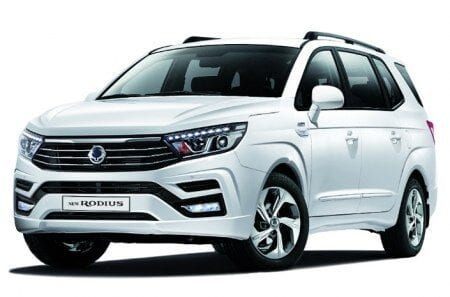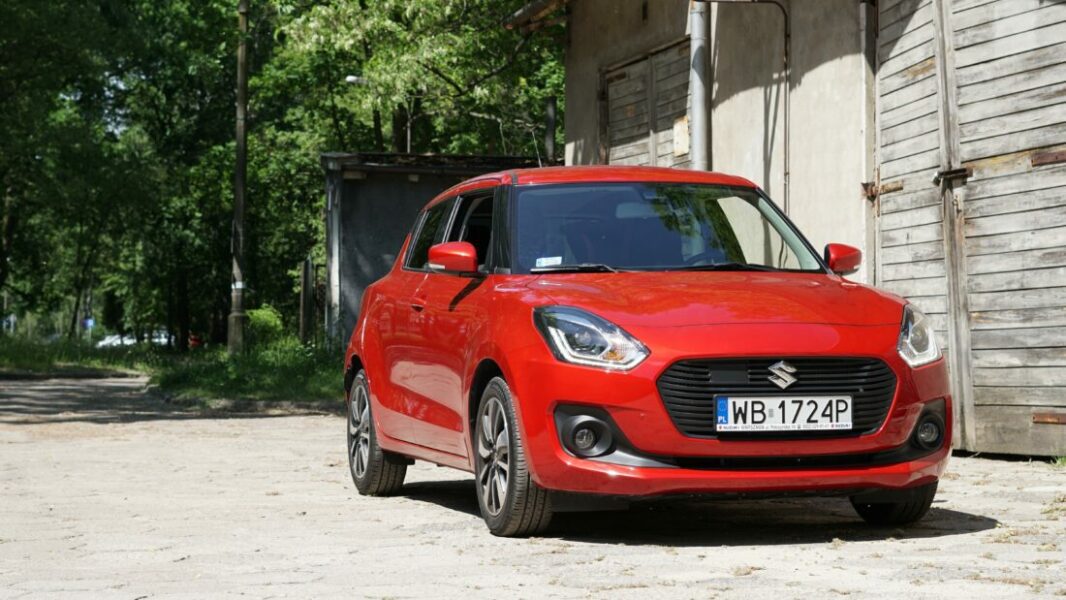
Test: Suzuki Swift 1.0 Boosterjet SHVS Elegance
Content
However, the above statement does not mean that it has not grown compared to its predecessor, thanks to the new platform, it received a wheelbase 20 millimeters longer and 40 millimeters wide, which is mainly reflected in the spaciousness of the front seats. where, despite the small external dimensions, the width. The back bench also has a lot of space, but children will feel good on it, and adults only on shorter routes. Compared to its predecessor, the boot is also larger, but it remains "classically" expandable with a stepped bottom, with a volume of 265 liters, it does not reach the current average and the user also has to deal with a loading edge.
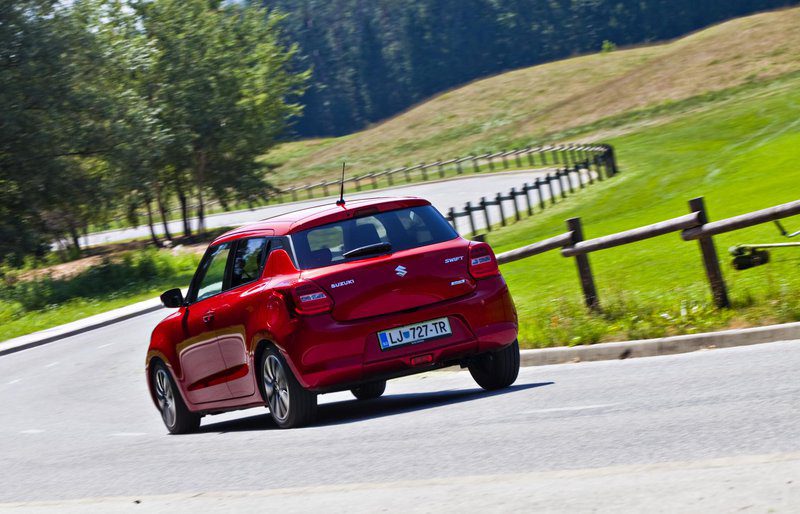
In any case, the driver and front passenger do not notice that the new Swift is also a good centimeter shorter and half a centimeter shorter than its predecessor, which is mainly reflected in the body lines, which, although essentially a redesign of the predecessor, have become more elegant, but above all , more alive, as the Swift in the new generation has abandoned much of the seriousness of its predecessor, which in some way it left Balena.
The relative spaciousness is probably also due to the fact that the designers have pushed the wheels fully into the corners of the body, which also translates into the Swift's ride quality, which is comfortable for city driving but also stable enough to afford quite a lot. a little on winding roads. freedom. This is where the new platform comes into play, which has been significantly reduced in weight through the use of modern lightweight and durable materials, while being stiff enough to keep the Swift in contact with the ground. It doesn't hurt that the designers have improved grip and steering.

The new platform also helped keep the Suzuki Swift under a ton, despite the size increase from base weight, which can also show more agility in the turbocharged liter three-cylinder petrol engine that makes good use of its official 110 'Horsepower'. In Swift, it worked in conjunction with a precise "simple" five-speed gearbox that's also well tuned so you almost never feel a lack of torque.
Much of the credit for the good acceleration also goes to the mild hybrid that the test Swift was equipped with. It is based on a built-in starter generator, which provides a start / stop function at speeds up to 15 kilometers per hour and is a combination of a generator and an electric motor to assist the gasoline engine. The ISG as a generator, at 12 volts anyway, charges both the lead-acid battery, which is powered as the starter motor, and the lithium-ion battery under the driver's seat, from which it draws power when it operates in a more power-hungry role. The battery is also charged during regenerative braking.
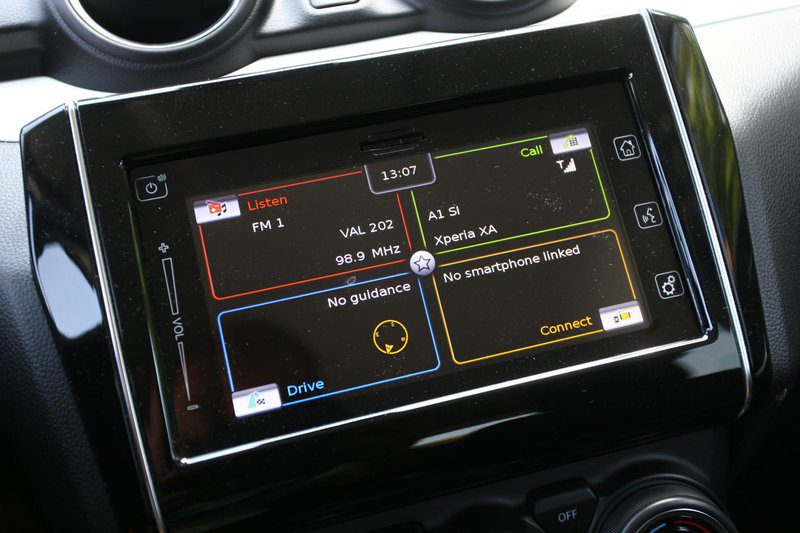
Suzuki emphasized that the mild hybrid is only intended to aid the engine and does not allow an electric motor alone, nor did it find its power and torque worthy of adding power and torque to a gasoline engine. You can still feel it while driving, especially during acceleration, when it significantly contributes to better acceleration in the lower engine rpm range before the turbocharger starts up, provided, of course, that there is enough electricity in the relatively small battery.
You can feel the mild hybrid, but you can also see it working on the screen between the two gauges - which have remained completely classic - where you can adjust the display of the petrol and electric motors. Suzuki has made sure that the display on the screen is quite diverse, because in addition to the usual data, you can also set graphical displays of the development of power and torque in the gasoline engine, the lateral and longitudinal acceleration that affects you, and much more. Air conditioning control has remained in the realm of conventional switches, so Suzuki has bundled everything else - at least in the more equipped versions - on a solid central seven-inch touchscreen that lets you control the radio, navigation and connections to your phone and apps. The operation of the full suite of safety devices, including lane departure warning, lane departure warning, forward collision warning, automatic emergency braking, and more, is still unrelated to the center display. The switches are grouped into an accessible assembly under the left side of the dash that you can't see the best, but with a little getting used to the position of each switch, it's not hard to remember.
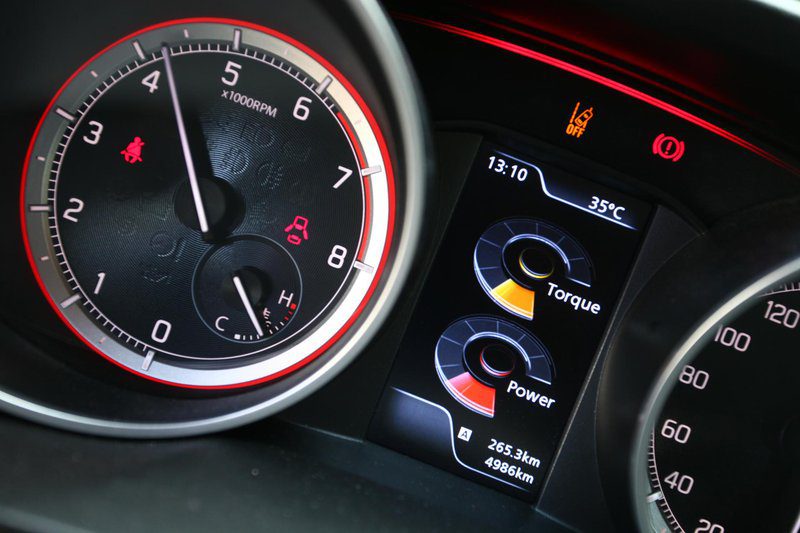
Despite our best efforts to create a pleasing and striking design, it may seem odd that the dashboard and other interior details are still made of the hard plastic that we are used to with Suzuki models, but we may still deserve the addition of softer foam. … The hard plastic is not too annoying to drive, especially since the finish is very good and you never hear an unpleasant sound from cornering. So you hear it multiple times through the chassis, which is arguably better insulated from the harsh chassis sounds.
Unlike the Ignis, which we tested in the spring and which was equipped with a stereo camera-based collision avoidance system, the Swift has a slightly different system that works in conjunction with a video camera and radar. Thus, in addition to collision protection and other safety devices, the Swift can also be equipped with active cruise control, which is especially evident on motorways, where it feels very good despite its small size, since the engine does not give a feeling of tension. of course, if you are driving at a speed limit. The lack of engine stress is also reflected in fuel consumption, which in the test reached a passable 6,6 liters, and the normal lap showed that the Swift can also run with a favorable 4,5 liters of gasoline per 100 kilometers.
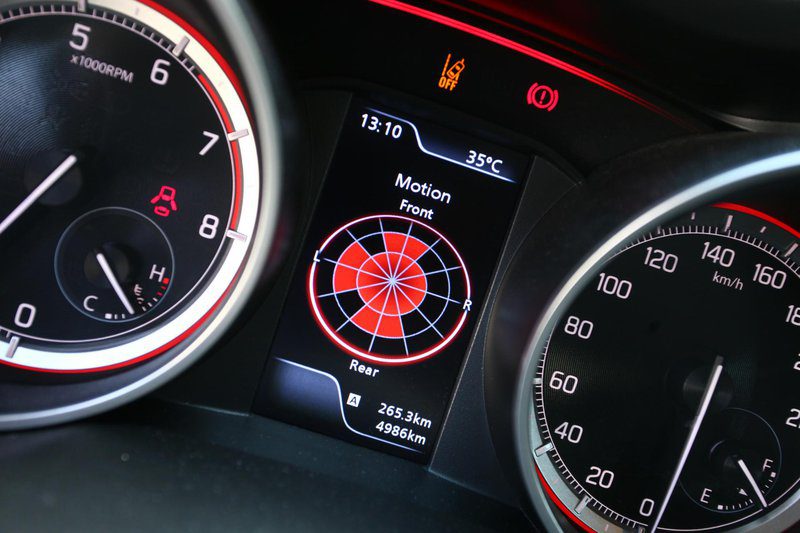
What about the price? The test Suzuki Swift with a liter three-cylinder engine, a mild hybrid, the best Elegance equipment and a red body color cost 15.550 euros, which is not the cheapest, but it can be put alongside the competition. In an equally well-equipped basic version, it can be much cheaper, as it costs just over 350 euros for ten thousand euros. In this case, you will have to settle for a less modern and powerful 1,2-liter four-cylinder engine, which, as we could see on the equally heavy Suzuki Ignis, can also handle driving tasks quite well.
text: Matija Janežić
photo: Sasha Kapetanovich
Read more:
ест: Suzuki Baleno 1.2 VVT Deluxe
ест: Suzuki Ignis 1.2 VVT 4WD Elegance
Test: Suzuki Swift 1.2 Deluxe (3 doors)
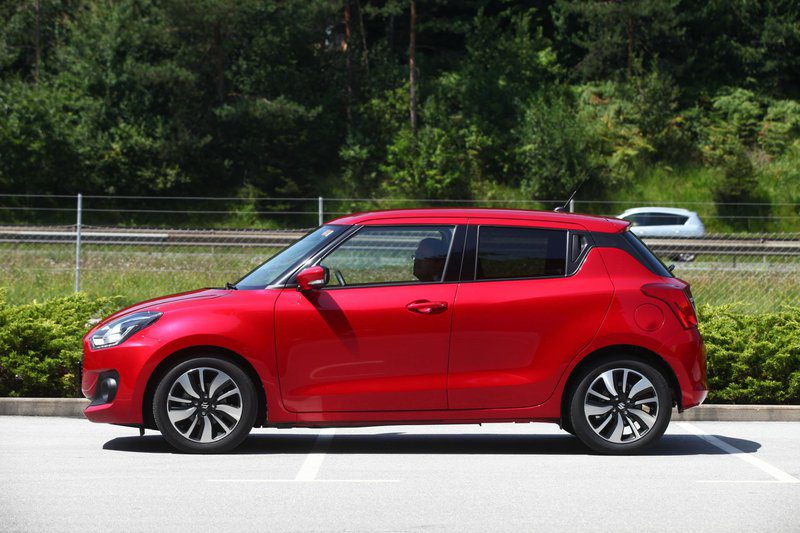
Suzuki Swift 1.0 Boosterjet SHVS Elegance
Basic data
| Sales: | Magyar Suzuki Corporation ltd. Slovenia |
|---|---|
| Base model price: | 10.350 € |
| Test model cost: | 15.550 € |
| Power: | 82kW (110 KM) |
| Acceleration (0-100 km / h): | 10,0 with |
| Maximum speed: | 195 km / h |
| Mixed flow ECE: | 4,5l / 100km |
| Guarantee: | 3 years or 100.000 km total warranty, 12 years rust proof warranty. |
| Systematic review | For 20.000 km or once a year. km |
Cost (up to 100.000 km or five years)
| Regular services, works, materials: | 723 € |
|---|---|
| Fuel: | 5.720 € |
| Tires (1) | 963 € |
| Loss of value (within 5 years): | 5.359 € |
| Compulsory insurance: | 2.675 € |
| CASCO INSURANCE (+ B, K), AO, AO + | 4.270 ( |
| Calculate the cost of auto insurance | |
| Buy up | € 19.710 0,20 (km cost: XNUMX €) |
Technical information
| engine: | 3-cylinder - 4-stroke - in-line - petrol - front mounted transversely - bore and stroke 73,0 × 79,5 mm - displacement 998 cm3 - compression ratio 10:1 - maximum power 82 kW (110 hp) ) at 5.500 rpm - average piston speed at maximum power 14,6 m / s - specific power 82,2 kW / l (111,7 hp / l) - maximum torque 170 Nm at 2.000–3.500 rpm / min - 2 camshafts in the head (belt) - 4 valves per cylinder - direct fuel injection. |
|---|---|
| Energy transfer: | the engine drives the front wheels - 5-speed manual transmission - gear ratio I. 3,545; II. 1,904 hours; III. 1,233 hours; IV. 0,885; H. 0,690 - differential 4,944 - wheels 7,0 J × 16 - tires 185/55 R 16 V, rolling circle 1,84 m. |
| Capacity: | top speed 195 km/h – 0-100 km/h acceleration 10,6 s – average fuel consumption (ECE) 4,3 l/100 km, CO2 emissions 97 g/km. |
| Transportation and suspension: | limousine - 5 doors, 5 seats - self-supporting body - front single wishbones, coil springs, three-spoke wishbones, stabilizer bar - rear axle shaft, coil springs, stabilizer bar - front disc brakes (forced cooling), rear discs, ABS, mechanical rear wheel brake (lever between seats) - rack and pinion steering wheel, electric power steering, 3,1 turns between extreme points. |
| Mass: | empty vehicle 875 kg - permissible total weight 1.380 kg - permissible trailer weight with brake: np, without brake: np - permissible roof load: np |
| External dimensions: | External dimensions: length 3.840 mm - width 1.735 mm, with mirrors 1.870 mm - height 1.495 mm - wheelbase 2.450 mm - front track 1.530 mm - rear 1.520 mm - ground clearance 9,6 m. |
| Inner dimensions: | longitudinal front 850-1.070 mm, rear 650-890 mm - front width 1.370 mm, rear 1.370 mm - head height front 950-1.020 mm, rear 930 mm - front seat length 500 mm, rear seat 490 mm - luggage compartment 265 - 947 370 l – handlebar diameter 37 mm – fuel tank XNUMX l. |
Our measurements
| T = 27 ° C / p = 1.028 mbar / rel. vl. = 57% / Tires: Bridgestone Ecopia EP150 185/55 R 16 V / Odometer status: 2.997 km | |
| Acceleration 0-100km: | 10,0s |
|---|---|
| 402m from the city: | 16,9 years ( 135 km / h) |
| Flexibility 50-90km / h: | 9,9s (IV.) |
| Flexibility 80-120km / h: | 13,3s (V.) |
| test consumption: | 6,6 l / 100km |
| Fuel consumption according to the standard scheme: | 4,5 l / 100km |
| Braking distance at 130 km / h: | 69,5m |
| Braking distance at 100 km / h: | 33,1m |
| AM table: | 40m |
| Noise at 90 km / h in 5rd gear | 62dB |
| Noise at 130 km / h in 5rd gear | 66dB |
| Test errors: | unmistakable |
Overall rating (318/420)
The Suzuki Swift differs from other small city cars mainly in that it is one of the few cars that has truly remained small, as many of its competitors have already reached the upper classes in terms of size. The possibilities are solid, the form will not leave you indifferent, and at the price it can come up.
Exterior (14/15)
Whether you like it or not, you can't blame the Suzuki Swift for not having a fresh design.
Interior (91/140)
Despite the small dimensions of the car, there is enough space in the front, children will feel better on the back bench, and the trunk does not reach average. The equipment is considerable, the controls are quite intuitive, and the hard plastic of the dashboard is a little disappointing.
Engine, transmission (46
/ 40)The engine, mild hybrid and drivetrain provide sovereign acceleration so the car doesn't have to strain too hard and the chassis is perfect for any requirement. Soundproofing could only have been slightly better, as sounds from the ground penetrate quite a bit into the cockpit.
Driving performance (60
/ 95)Small dimensions come to the fore, especially in city traffic, where the Swift is very manoeuvrable and also finds a solid footing on intercity roads and highways.
Performance (28/35)
The Suzuki Swift doesn't feel like it's running out of power. It can also show a lot of sportiness, which is certainly not at the level of Swift Sport, which we expect soon, but does not leave you indifferent.
Security (38/45)
In terms of safety, the Suzuki Swift, at least in the tested version, is very well equipped.
Economy (41/50)
Fuel consumption is in line with expectations, the warranty is average, and the price is somewhere in the middle of the class.
We praise and reproach
form
driving and driving
engine and transmission
plastic inside
soundproofing
trunk
